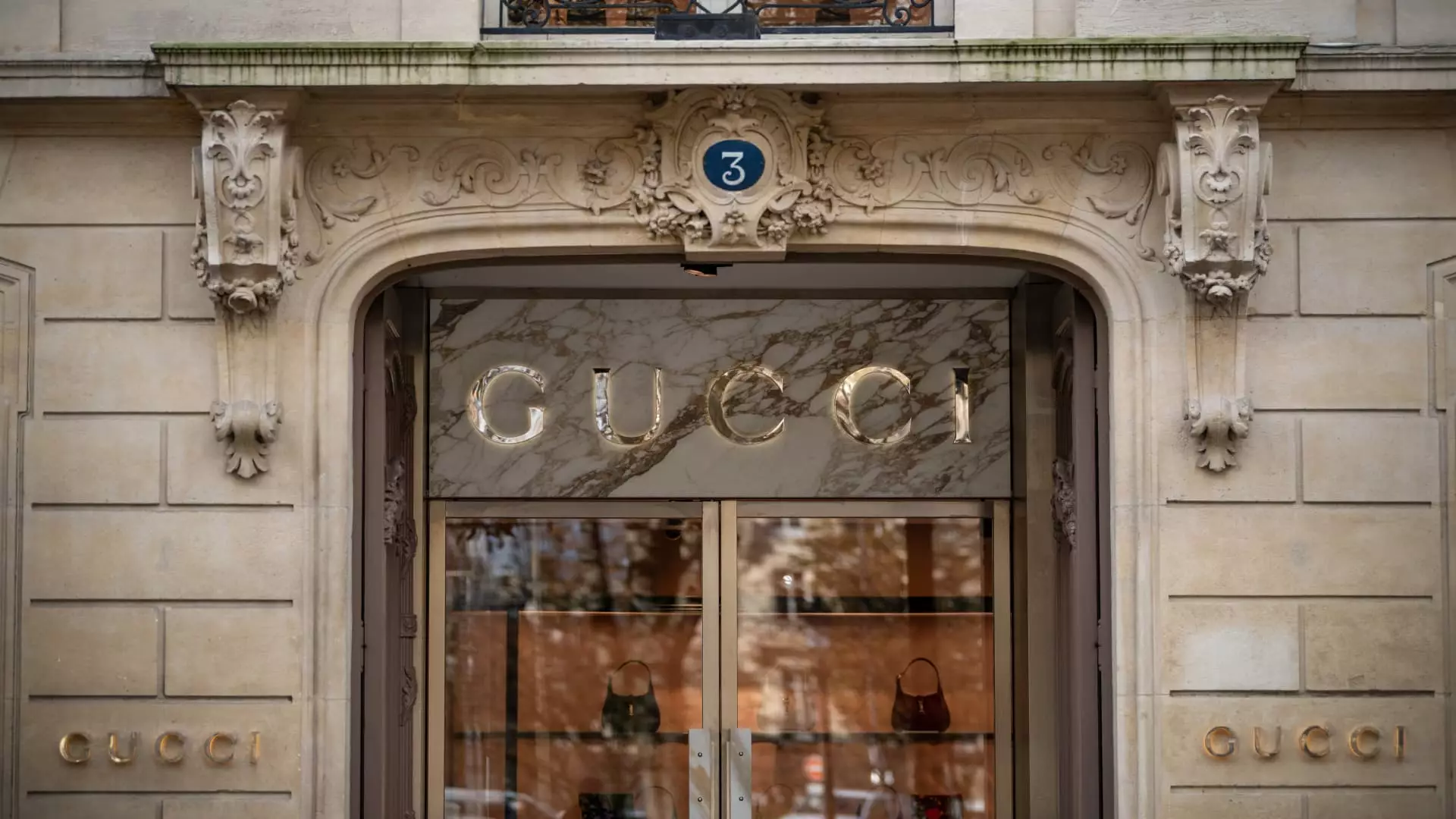When Kering’s first-quarter sales report hit the market, the shockwaves reverberated through the luxury goods sector. The company’s revenues plummeted by a staggering 14% year-on-year, landing at 3.9 billion euros ($4.4 billion), clearly below the analyst expectations of 4.01 billion euros. This was not just a simple blip; it was a clarion call for the brand that has struggled to maintain its stature in a tumultuous market. The collapse of Gucci, which accounts for nearly half of Kering’s revenue, with a staggering 25% drop, encapsulates the broader issues plaguing the luxury industry. This is a definitive situation that even the most optimistic investors cannot overlook.
Waning Appeal: The Gucci Enigma
Gucci’s crisis is emblematic of a larger trend observed across the luxury sector. The brand’s designs, once the epitome of high-fashion desirability, have surprisingly faded in allure. With a new artistic director, Demna Gvasalia, at the helm, optimism for a turnaround exists—but it is shrouded in skepticism. In an age where brands must constantly evolve to stay relevant, Gucci appears to be stuck in a time warp where its high exposure to the Chinese consumer and ongoing controversies have made it increasingly challenging to recapture the market.
Confounding this situation is the reality that luxury brands have long been viewed as immune to economic dips. However, Kering’s experience demonstrates that this perception is more fantasy than fact. With a whopping 25% decline in Asia, followed closely by drops of 13% in North America and Europe, Kering’s predicament reveals how sensitive even luxury brands can be to shifting consumer sentiments.
Macro Forces and Granular Implications
Kering’s Chairman François-Henri Pinault highlighted how macroeconomic hurdles loom large over the industry—a viewpoint swiftly backed by analysts. The reality is that high inflation and deteriorating economic conditions have altered the buying habits of even the wealthiest consumers. The idea that luxury brands could be insulated from such financial disturbances is being shattered, as evident in lowered consumer confidence. The investments required to sustain high-end labels are becoming riskier, with deteriorating sales performances triggering alarm bells that reverberate throughout the market.
Analysts have pointed out that as the broader economy struggles, luxury goods may no longer remain a “safe haven.” Lufthansa recently warned of how weaker global stock markets will postpone any potential recovery in luxury demand. Traditionally, luxury brands had the leeway to pass on added costs to customers, but Kering’s struggle to maintain sales undermines this defense mechanism.
Dissecting the Brand’s Vulnerability
In a telling move, competitors like LVMH have been likened to Kering for their distinct approaches to price adjustments in response to tariffs. Kering’s already weakened sales position means it is less equipped to absorb inflationary pressures and pass those costs onto consumers. What’s more, the growing narrative of a luxury brand being a lavish necessity is fading, causing a dangerous re-evaluation of consumer spending habits.
As Adam Cochrane of Deutsche Bank suggests, the luxury sector could face a reckoning, and prudent analysts are tasked with scrutinizing how Kering and its ilk navigate uncharted waters. With many brands reporting their fortuitous fourth-quarter earnings at the year’s end, the anticipated market recovery now appears on shaky ground.
Charting a Path Forward
Given the circumstances, Kering’s strategy must evolve with urgency. The moment calls for adaptive resilience—embracing informed shifts in consumer preferences while maintaining brand integrity. Strategies aimed at rebuilding Gucci’s image should prioritize authenticity while ensuring that any new artistic direction resonates with contemporary cultural movements.
Moreover, navigating the fine line between exclusivity and broadening appeal is crucial for survival in a landscape marked by rapid changes in consumer behavior. As luxury brands grapple with economic uncertainties, they must recognize that success in the future hinges on understanding their customer base deeply and responding to their evolving needs rather than simply relying on their previous market power.
As Kering finds itself grappling with unprecedented challenges, the question remains: will it emerge stronger and wiser, or will it become an example of a brand that failed to adapt?

